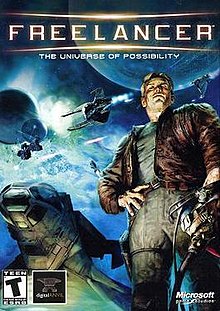
Halo: Combat Evolved is a 2001 first-person shooter video game developed by Bungie and published by Microsoft Game Studios for the Xbox. It was released as a launch game for Microsoft's Xbox video game console on November 15, 2001. The game was ported to Microsoft Windows and Mac OS X in 2003. It was later released as a downloadable Xbox Original for the Xbox 360. Halo is set in the twenty-sixth century, with the player assuming the role of the Master Chief, a cybernetically enhanced supersoldier. The Chief is accompanied by Cortana, an artificial intelligence. Players battle aliens as they attempt to uncover the secrets of the eponymous Halo, a ring-shaped artificial world.

Phantasy Star Online is an online role-playing game (RPG) developed by Sonic Team and published by Sega in 2000 for the Dreamcast. It was the first online RPG for game consoles; players adventure with up to three others over the internet to complete quests, collect items and fight enemies in real-time action RPG combat. The story is unrelated to previous games in the Phantasy Star series.

Halo 2 is a 2004 first-person shooter game developed by Bungie and published by Microsoft Game Studios for the Xbox console. Halo 2 is the second installment in the Halo franchise and the sequel to 2001's critically acclaimed Halo: Combat Evolved. The game features new weapons, enemies, and vehicles, another player character, and shipped with online multiplayer via Microsoft's Xbox Live service. In Halo 2's story mode, the player assumes the roles of the human Master Chief and alien Arbiter in a 26th-century conflict between the United Nations Space Command, the genocidal Covenant, and later, the parasitic Flood.

Digital Anvil, Inc. was an American video game developer based in Austin, Texas owned by Microsoft Game Studios (MGS). It was founded in 1996 by brothers Chris and Erin Roberts along with Tony Zurovec, Marten Davies, Craig Cox, John Miles, Eric Peterson and Robert Rodriguez, creators of the Wing Commander franchise from Origin Systems.

Midtown Madness is a 1999 racing game developed by Angel Studios and published by Microsoft for Microsoft Windows. The demo version was released in April 1999. Two sequels followed, with Midtown Madness 2 released in September 2000 and Midtown Madness 3 released in June 2003 for the Xbox. The game is set in Chicago; the object is for the player to win street races and obtain new cars.

Dungeon Siege is an action role-playing game developed by Gas Powered Games and published by Microsoft in April 2002, for Microsoft Windows, and the following year by Destineer for Mac OS X. Set in the pseudo-medieval kingdom of Ehb, the high fantasy game follows a young farmer and her companions as they journey to defeat an invading force. Initially only seeking to warn the nearby town of the invasion of a race of creatures named the Krug, the farmer and the companions that join her along the way are soon swept up in finding a way to defeat another race called the Seck, resurgent after being trapped for 300 years. Unlike other role-playing video games of the time, the world of Dungeon Siege does not have levels but is a single, continuous area without loading screens that the player journeys through, fighting hordes of enemies. Also, rather than setting character classes and manually controlling all of the characters in the group, the player controls their overall tactics and weapons and magic usage, which direct their character growth.
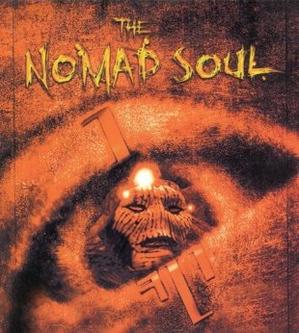
The Nomad Soul is an adventure game developed by Quantic Dream and published by Eidos Interactive. It was released for Microsoft Windows in 1999 and Dreamcast in 2000. The player can engage in unarmed and armed combat, explore the three-dimensional environment of Omikron City, and talk with non-player characters to progress the story. It follows an investigation into a case of serial killings, which unravels the supernatural truth behind the city's ancient history.

Red Dead Revolver is a 2004 action-adventure game developed by Rockstar San Diego and published by Rockstar Games. It is the first entry in the Red Dead series, and was released for the PlayStation 2 and Xbox in May 2004. Set in the 1880s, during the American frontier, the single-player story follows bounty hunter Red Harlow's quest for revenge after the murder of his parents. A local multiplayer mode allows up to four players to face off against each other or AI-controlled bots in free-for-all battles.

Starlancer is a space-based science fiction flight simulator computer game, created by Erin and Chris Roberts, and developed by Warthog Games under the auspices of Digital Anvil.
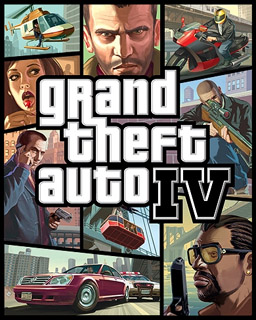
Grand Theft Auto IV is a 2008 action-adventure game developed by Rockstar North and published by Rockstar Games. It is the sixth main entry in the Grand Theft Auto series, following 2004's Grand Theft Auto: San Andreas, and the eleventh instalment overall. Set in the fictional Liberty City, based on New York City, the single-player story follows Eastern European war veteran Niko Bellic and his attempts to escape his past while under pressure from high-profile criminals. The open world design lets players freely roam Liberty City, consisting of three main islands, and the neighbouring state of Alderney, which is based on New Jersey.

Test Drive Unlimited is a 2006 racing video game developed by Eden Games and published by Atari for Xbox 360 and Microsoft Windows. Atari Melbourne House developed the PlayStation 2 and PlayStation Portable versions. Being the eighteenth entry in the Test Drive series, Unlimited serves as a reboot of the franchise, discarding the continuity of the previous games. The game features over 125 licensed sports cars and motorcycles and the terrain is modeled after the Hawaiian island of Oʻahu that features over 1,000 miles (1,600 km) of roads and highways.

Brute Force is a video game released for the Xbox by Microsoft in 2003. The game is a squad-based third-person shooter that uses four members of a team who fight in numerous battles. Each character on the team has their own strengths and weaknesses. The story is of a science-fiction setting where humans spread throughout the galaxy and tension arises with the threat of a hostile alien race that appears. The squad, Brute Force, is sent in to confront the enemy. Brute Force began as a PC game in 2000, but was soon after turned into a first-party title for the Xbox, following the buyout of Digital Anvil by Microsoft.
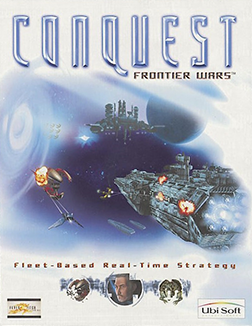
Conquest: Frontier Wars is a real-time strategy game released in 2001 by Ubi Soft and developed by Fever Pitch Studios. A good amount of the development was done at Digital Anvil in Austin, Texas, a startup developer originally owned by Chris Roberts, Erin Roberts, Eric Peterson, John Miles, Tony Zurovec, Marten Davies and Robert Rodriguez. Once Microsoft purchased Digital Anvil, Eric Peterson and Tom Mauer left to form Fever Pitch Studios Inc, and lead a team to complete the game as originally intended by the team. On December 9, 2013, the source code was bundled with every copy of the game purchased on GOG.com.
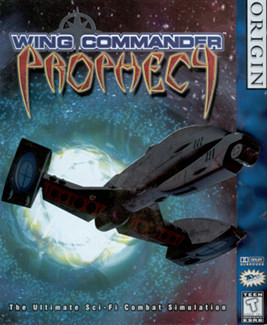
Wing Commander: Prophecy is the fifth installment in the Wing Commander science fiction space combat simulator franchise of computer games. The game was originally released in 1997 for Windows, produced by Origin Systems and distributed by Electronic Arts, and in 2003, a GBA conversion was produced by Italy-based Raylight Studios and distributed by Destination Software.

Lego Racers is a Lego-themed racing video game developed by High Voltage Software and published by Lego Media in 1999.
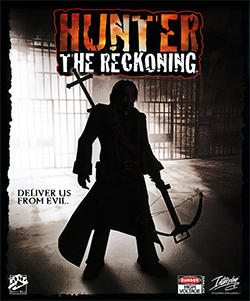
Hunter: The Reckoning is a 2002 hack-and-slash third-person shooter video game developed by High Voltage Software and published by Interplay Entertainment for the Xbox and GameCube. It is based on the tabletop role-playing game of the same name, and is part of the larger World of Darkness series. Two sequels, Wayward and Redeemer, were both released in 2003.

Crimson Skies: High Road to Revenge is a first-party video game developed by FASA Studio for the Xbox. The game, like the earlier Crimson Skies for the PC, is an action-oriented arcade flight game. Nonetheless, there are significant differences between the gameplay of High Road to Revenge and that of the original PC title. For example, while the Xbox game has a more open-ended mission structure, it offers less plane customization than the PC game. A Microsoft Windows port was planned but was cancelled.

Battlestations: Midway is a video game developed by Eidos Hungary and released in 2007 for the Xbox 360 and Microsoft Windows. The Mac version of this game was developed by Robosoft Technologies, based out of India and published in July 2008 by Feral Interactive.

Actua Pool also known as Ultimate 8-Ball is a sports simulation video game developed by British companies Gremlin Interactive and Mirage Ltd as part of their highly successful Actua Sports series of sport simulators of the mid-to-late 1990s. Actua Pool, a pool game, was originally released on the Microsoft Windows platform and the Sony PlayStation home console in 1999; these versions were also published under the name Pool Shark. The game was very well received, praised for its realistic physics engine and challenging AI opponents, although the game spawned a sequel which was not as successful. In 2007, Actua Pool was ported to the Nintendo DS handheld game console.

MySims SkyHeroes is a video game developed by Behaviour Interactive and published by Electronic Arts. It is the sixth and final game in the MySims series. The game was released in 2010 for the Nintendo DS, PlayStation 3, Wii, and Xbox 360.
